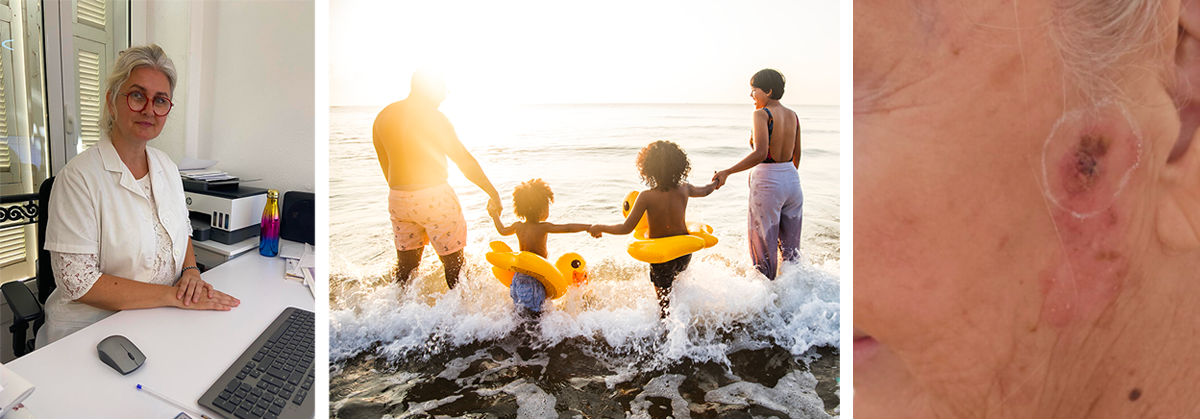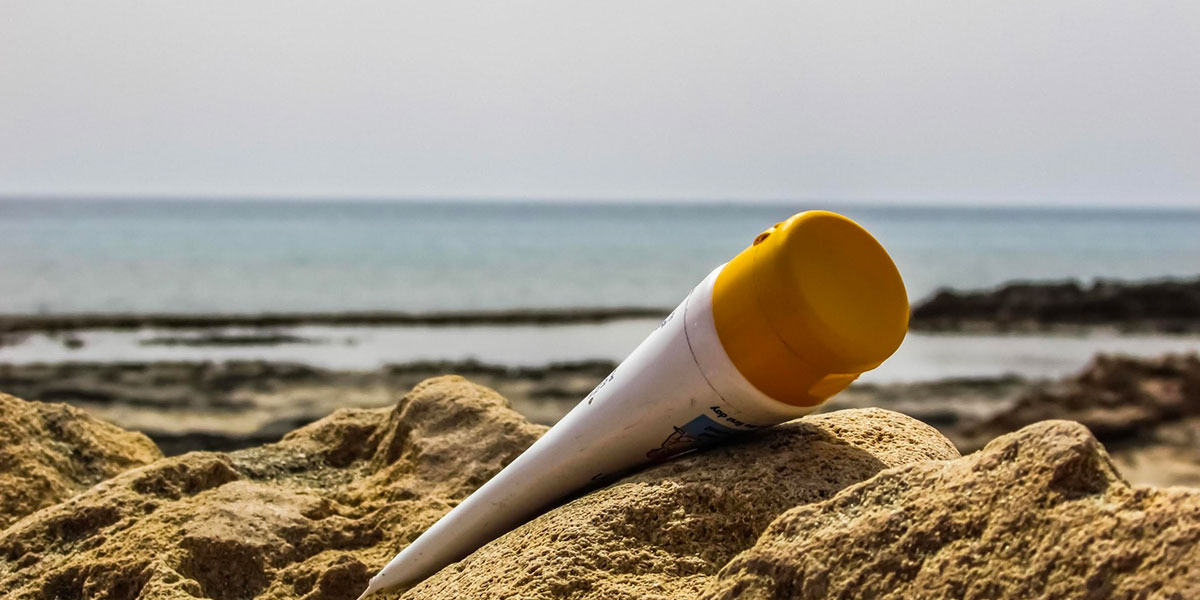Prévention - Dépistage
Sun safety: the risks of sun exposure and how to avoid them
Skin ageing, melanoma and other skin cancers, sunburns, allergies and wrinkles: these conditions can be accelerated by excessive exposure to UV rays. This summer, MonacoSanté offers a short guide on how to protect yourself and others from sun-related risks.
We are spending more and more time in the sun. For Monica Asavei, an independent dermatologist in Monaco, there is no doubt. At her practice on Avenue de l’Annonciade, misconceptions about the benefits of sun exposure die hard. “In a study conducted in 17 countries across Europe, 83% of respondents said sunshine provided energy; 73% believed that it made people look healthy, and 52% said they couldn't imagine coming back from a holiday without a tan,” says the dermatologist. As she points out, however, every sunburn sustained remains in the skin. “The cumulative effects of UV rays is significant”. And it begins at an early age. Hence her first strict rule: a total ban on direct exposure to the sun for babies under six months and the systematic application of mineral sunscreen for children under three. “A baby’s skin, far thinner and more permeable than an adult’s, absorbs more substances and chemical sunscreen can become an irritant. Mineral creams are thicker and rest on the skin’s surface without being absorbed, offering better protection”. Her advice is identical for adults, especially those with fair skin, red-haired people and those who have a lot of moles, as well as people with hair loss who need to protect their scalp and ears.
Cellular mutations that degenerate into carcinoma, melanoma or keratosis
The doctor’s intransigence comes from the dangers inherent in excessive exposure from a young age. “Sunburns sustained in childhood are the greatest danger. Sunshine, UVA rays and UVB rays are harmful to the skin and cause cell damage. This damage modifies DNA and causes mutations that can lead to skin cancer,” indicates Dr Asavei. In 2022, 10,000 new cases were recorded in mainland France. Several sun-related skin cancers exist, including melanoma, squamous cell carcinomaand basal cell carcinoma. Actinic keratoses and precancerous lesions are other consequences of intense exposure to the sun. The doctor also warns of another, less dangerous, risk that nevertheless leaves its mark: wrinkles brown spots and a loss of elasticity caused by UV rays. There are two categories of rays: UVA and UVB. Rays emitted by the sun penetrate the skin and trigger the breakdown of cellular DNA. “Longer UVA rays reach deep under the dermis, while UVB rays affect the epidermis, the surface layer of the skin”. And don’t think a window, umbrella or cloud cover protects you! “UVA rays pass through. If direct sunlight comes in through your office window, you need to protect your skin,” insists the doctor.
Is sunscreen a cure-all?
“If applied properly, every time you expose your skin, yes,” replies the dermatologist. The type of sunscreen applied must be suitable for the specific skin type. A naturally dark skin will tolerate a sunscreen with an SPF of 30, while SPF 50 will be imperative for pale skin. Also important, chemical creams must be applied 30 minutes before exposure. Sunscreens containing mineral filters, on the other hand, offer immediate protection. “Sunscreen must be applied after every swim and in the case of heavy perspiration. It should also be reapplied every two hours on the beach.” Small children should remain in the shade and wear a hat, sunglasses and UV protective clothing. “Applying a mineral sunscreen is not enough to provide protection”. Naturally, the dermatologist also warns to stay out of the sun when it is strongest, between 11 am and 4 pm. If you travel to a tropical region, this rule applies between 10 am and 2 pm. Similar recommendations apply to the practice of mountain and other outdoor sports and gardening. “UV rays are even stronger high up in the mountains, so sunscreen should be re-applied every hour,” insists Dr Asavei. People who have experienced hair loss must not forget to apply sunscreen to their head and ears. “Ears are a frequent location of small carcinomas because we forget to protect them,” says the dermatologist.
Red flag: tanning beds
The use of tanning beds and booths is another challenge for the medical professional. “Using a tanning booth exposes the skin to massive amounts of UVA rays. This increases the risk of skin cancer, and particularly of melanomas. A single session before the age of 35 increases the likelihood of skin cancer by 59%,” she warns. The idea that self-tanning provides a cumulative effect is particularly misleading, she believes. “‘Pre-tanning’ does not protect one’s skin; it just creates a false sense of security”. What are the risks of overexposure to the sun? The dermatologist is crystal clear: “After a certain point, skin can no longer tan. This is why many people have small, round white spots on their skin. In dermatology these are called idiopathic guttate hypomelanosis, or sunspots. Your skin is telling you it has no resistance left to sunshine. At this stage, being cautious is essential.” The dermatologist recommends moisturising skin after exposure and monitoring. “Use a mirror to examine every inch of your skin, every three to four months”. An appointment with a dermatologist for dermatoscopic screening is recommended once a year. “This can be every six months in the case of unusual moles or a family history of melanoma,” adds Dr Asavei. A sun allergy is another reason to come in for an appointment. Sun allergies manifest as itchy but treatable patches and pimples. “In April, before the summer season, we can prescribe 12 phototherapy sessions at Princess Grace Hospital, at a rate of three sessions per week. Antihistamines and dermocorticoids also help.” In sum, the sun’s rays may be silent, but their consequences are not.


